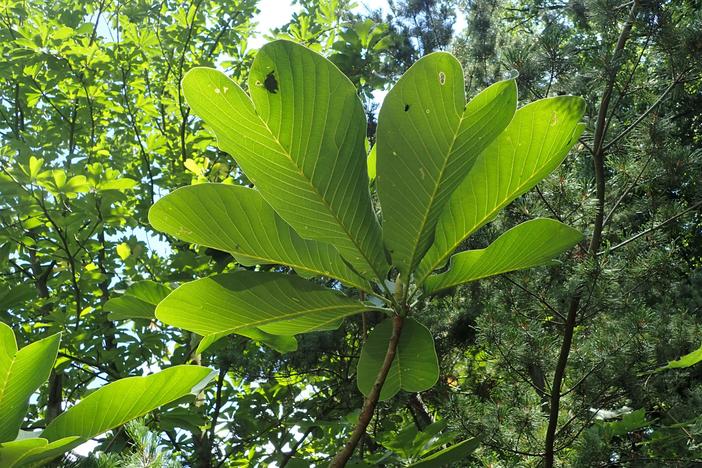Biloba Magnolia
(Magnolia officinalis var. biloba)
Biloba Magnolia (Magnolia officinalis var. biloba)
/
/

Krzysztof Ziarnek, Kenraiz
CC BY-SA 4.0
Image By:
Krzysztof Ziarnek, Kenraiz
Recorded By:
Copyright:
CC BY-SA 4.0
Copyright Notice:
Photo by: Krzysztof Ziarnek, Kenraiz | License Type: CC BY-SA 4.0 | License URL: https://creativecommons.org/licenses/by-sa/4.0 | Uploader: Kenraiz | Publisher: Wikipedia Commons






















Estimated Native Range
Summary
Magnolia officinalis var. biloba, commonly known as Biloba Magnolia or Houpu Magnolia, is a slow-growing deciduous tree native to the mountain forests and valleys of China. It typically reaches a height of 20-30 feet (6-9 meters) and a width of 15-20 feet (4.6-6 meters), with a rounded crown and often with multiple stems. The leaves are large, green, and can be up to 10 inches long, with a distinctive bilobed tip. The creamy white flowers are large, fragrant, and showy, blooming in late spring to early summer, followed by cylindrical fruit that matures in late summer to fall.
The Biloba Magnolia is valued for its medicinal bark and aromatic flowers, which have been used in traditional Chinese medicine. It is also appreciated for its ornamental qualities, including its unique foliage and striking flowers. In cultivation, it is used in woodland gardens, as a specimen tree, or in large garden borders. It prefers full sun to part shade and thrives in medium draining loam or clay soils. While it requires medium amounts of water, it is relatively drought-tolerant once established. Gardeners should be aware that it may suffer from leaf spot diseases and can be sensitive to late spring frosts, which can damage the flowers.CC BY-SA 4.0
The Biloba Magnolia is valued for its medicinal bark and aromatic flowers, which have been used in traditional Chinese medicine. It is also appreciated for its ornamental qualities, including its unique foliage and striking flowers. In cultivation, it is used in woodland gardens, as a specimen tree, or in large garden borders. It prefers full sun to part shade and thrives in medium draining loam or clay soils. While it requires medium amounts of water, it is relatively drought-tolerant once established. Gardeners should be aware that it may suffer from leaf spot diseases and can be sensitive to late spring frosts, which can damage the flowers.CC BY-SA 4.0
Plant Description
- Plant Type: Tree
- Height: 20-30 feet
- Width: 15-20 feet
- Growth Rate: Slow
- Flower Color: White
- Flowering Season: Spring
- Leaf Retention: Deciduous
Growth Requirements
- Sun: Full Sun, Part Shade
- Water: Medium
- Drainage: Medium
Common Uses
Fragrant, Low Maintenance, Showy Flowers
Natural Habitat
Native to the mountain forests and valleys of China
Other Names
Common Names: Biloba Magnolia, Two-Lobed Magnolia, Houpu Magnolia
Scientific Names: , Magnolia officinalis var. biloba, Magnolia biloba, Magnolia officinalis subsp. biloba,
GBIF Accepted Name: